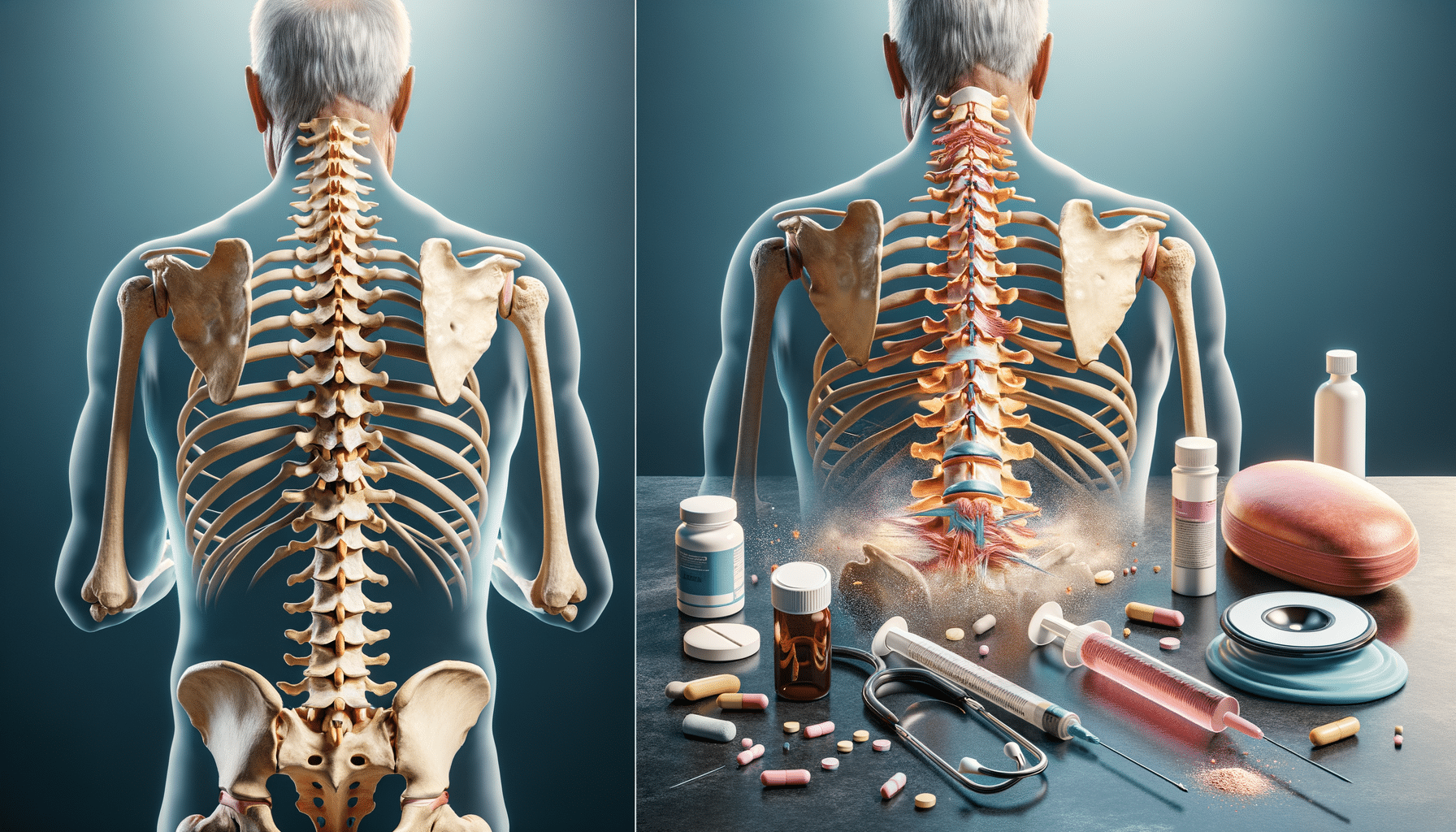
Spinal Stenosis in Elderly: Understanding Symptoms and Relief Options
Spinal Stenosis in the Elderly: A Growing Concern
Spinal stenosis is a condition characterized by the narrowing of the spinal canal, which can lead to pressure on the spinal cord and nerves. This condition is particularly prevalent among the elderly, often due to the natural wear and tear on the spine that occurs with aging. As the population continues to age, spinal stenosis is becoming an increasingly common issue, necessitating greater awareness and understanding.
In the elderly, spinal stenosis can result from several factors, including osteoarthritis, thickening of spinal ligaments, and herniated discs. These changes can lead to symptoms such as back pain, numbness, and weakness in the limbs, which can significantly impact daily activities and quality of life. Moreover, the risk of spinal stenosis increases with age, making it a critical health concern for seniors.
Recognizing the symptoms early is crucial for managing the condition effectively. Common symptoms include pain during walking or standing, relief when sitting or bending forward, and in severe cases, loss of bladder or bowel control. Early diagnosis and intervention can help alleviate symptoms and improve the quality of life for those affected. Understanding the risk factors and symptoms can empower the elderly and their caregivers to seek timely medical advice and explore suitable treatment options.
Understanding Spinal Stenosis: Causes and Symptoms
Spinal stenosis occurs when the spaces within the spine narrow, reducing space for the spinal cord and nerves. This narrowing can be caused by various factors, including bone overgrowth, herniated disks, thickened ligaments, and spinal injuries. Each of these factors contributes to the pressure on the spinal nerves, leading to the symptoms associated with the condition.
Symptoms of spinal stenosis can vary depending on the location and severity of the narrowing. Common symptoms include:
- Back pain, particularly when standing or walking
- Numbness or tingling in the extremities
- Muscle weakness
- Difficulty with balance and coordination
In cervical spinal stenosis, where the narrowing occurs in the neck region, symptoms may include neck pain and more severe neurological issues, such as problems with balance and coordination. In lumbar spinal stenosis, affecting the lower back, symptoms often include pain in the legs and difficulty walking.
Understanding these symptoms and their causes is essential for individuals experiencing back pain and related issues. By recognizing the signs of spinal stenosis early, individuals can seek medical evaluation and begin appropriate treatment, potentially preventing further complications and improving their overall health and mobility.
Treatment Options for Spinal Stenosis
Treating spinal stenosis involves a combination of strategies aimed at relieving symptoms and improving function. The choice of treatment often depends on the severity of symptoms and the overall health of the patient. Here are some common treatment approaches:
- Physical Therapy: Aimed at strengthening the muscles supporting the spine, improving flexibility, and reducing pain. Physical therapy can be particularly beneficial for elderly patients, helping them maintain mobility and independence.
- Medications: Nonsteroidal anti-inflammatory drugs (NSAIDs) and pain relievers can help manage pain and inflammation associated with spinal stenosis.
- Epidural Steroid Injections: These can provide temporary relief by reducing inflammation around the affected nerves.
- Surgery: In severe cases, surgical intervention may be necessary to relieve pressure on the spinal cord or nerves. Procedures such as laminectomy, laminotomy, or spinal fusion may be considered.
Each treatment option has its benefits and potential risks, and decisions should be made in consultation with healthcare providers. For many patients, a combination of therapies may offer the most effective relief. It’s important for patients to discuss their symptoms and treatment preferences with their doctors to develop a personalized care plan that addresses their specific needs.
Living with Spinal Stenosis: Coping Strategies and Lifestyle Adjustments
For those living with spinal stenosis, lifestyle adjustments can play a crucial role in managing symptoms and maintaining quality of life. Here are some strategies that can help:
- Exercise Regularly: Engaging in low-impact exercises such as walking, swimming, or cycling can help maintain flexibility and strength, reducing the strain on the spine.
- Maintain a Healthy Weight: Excess weight can put additional pressure on the spine, exacerbating symptoms. Maintaining a healthy weight through diet and exercise can alleviate some of this pressure.
- Use Assistive Devices: Canes or walkers can provide support and stability, reducing the risk of falls and helping with mobility.
- Practice Good Posture: Proper posture can minimize stress on the spine, helping to reduce pain and discomfort.
Additionally, staying informed about the condition and actively participating in one’s care can empower individuals to manage their symptoms more effectively. Support from family, friends, and support groups can also provide emotional and practical assistance, making it easier to cope with the challenges of living with spinal stenosis.
Conclusion: Navigating Spinal Stenosis in the Elderly
Spinal stenosis is a significant concern for the elderly, impacting mobility and quality of life. Understanding the causes, symptoms, and treatment options is essential for managing this condition effectively. By recognizing the signs early and pursuing appropriate treatment, seniors can maintain their independence and enjoy a better quality of life.
It is important to approach spinal stenosis with a comprehensive strategy that includes medical treatment, lifestyle adjustments, and support from healthcare professionals and loved ones. With the right approach, individuals with spinal stenosis can continue to lead active and fulfilling lives.

